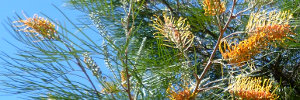
| ||
| ||
Grevilleas
Grevillea species and cultivars
Family: ProteaceaeGrevilleas are one of the most popular groups of Australian natives, but you don't have to have a "native" garden to appreciate their beauty and usefullness in the garden.
Many of the modern cultivars can hold their own with exotic garden plants for beauty, and can beat most in terms of drought-resistance, too. They are even being developed for cut flowers. Considering their popularity, we might expect Grevillea breeding to continue to improve characteristics even more in the future.
There's such huge range to chose from, from trees to prostrate groundcovers, and with new varieties coming onto the market all the time, it can get a little confusing. If you're a breeder who has a new (or old) grevillea cultivar to promote commercially, please get in touch about appearing on this page.
Remember, grevilleas are members of the Proteaceae, so exercise caution with fertilisers containing phosphorous. Best to play safe with a formulation recommended for Australian natives. Nevertheless, don't over-feed.
Do prune them. Like most garden shrubs, appropriate pruning encourages attractive compact growth and flowers down where you can see them.
Grevilleas have the added advantage of attracting wildlife, particularly birds. The nectar in the flowers is a big drawcard, but the bushes can be habitat, too.
Grevillea robusta or Silky Oak, is a tall rainforest tree which is too big for suburban gardens but it has been employed as a rootstock for many other Grevillea species. It's vigour and adaptation to tropical conditions have expanded the range of Grevilleas than can be grown in gardens, particularly in humid coastal conditions.
Some Grevillea varieties
These images will help you get an idea of what different varieties look like, but also how they might be used in the landscape.
Grevillea 'Dorothy Gordon'
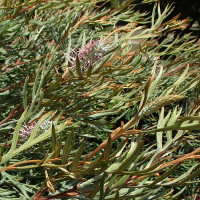
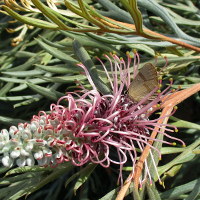
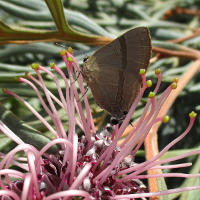
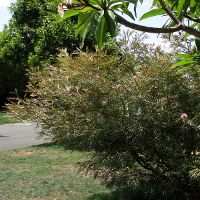
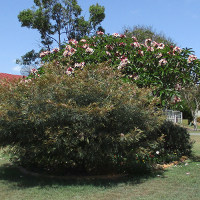
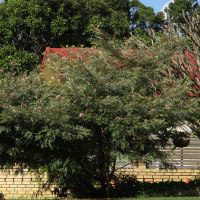
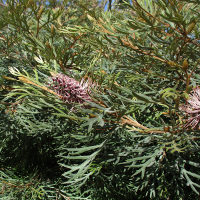
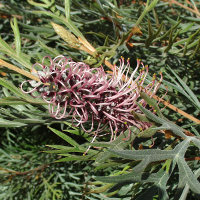
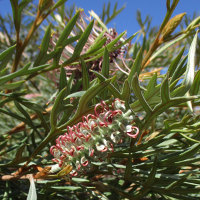
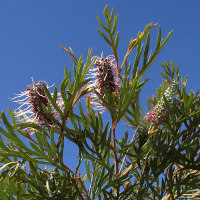
Grevillea 'Firesprite'
Grevillea 'Flamingo'
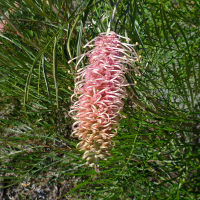
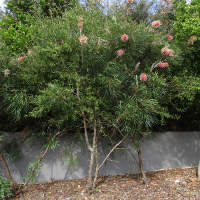
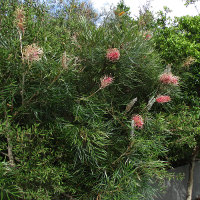
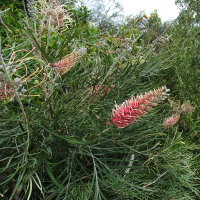
Grevillea 'Golden Lyre'
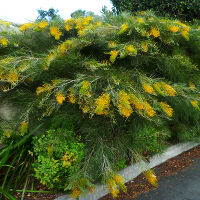
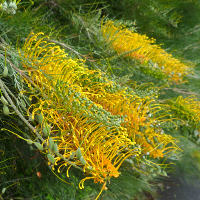
Grevillea 'Honey Gem'
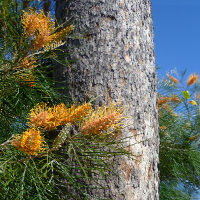
Grevillea 'Misty Pink'
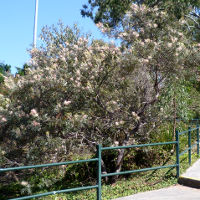
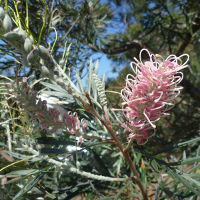
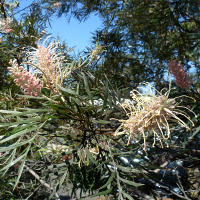
Grevillea 'Moonlight'
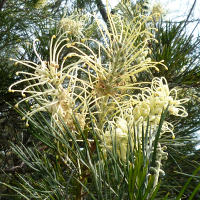
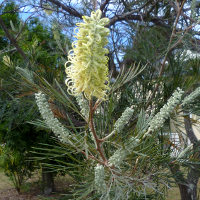
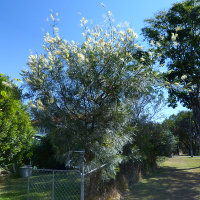
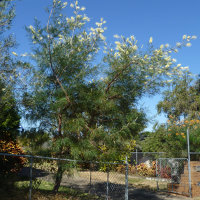
Grevillea 'Majestic'
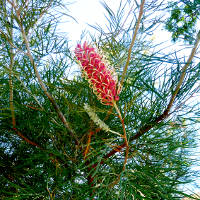
Grevillea 'Orange Marmalade'
No images yetGrevillea 'Peaches and Cream'
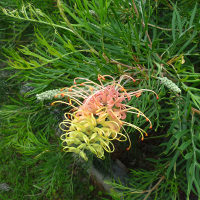
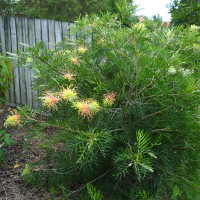
Grevillea 'Pink Midget'
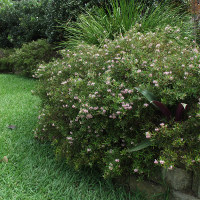
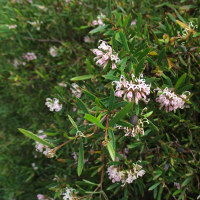
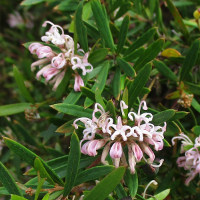
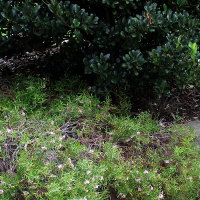
Grevillea 'Poorinda Royal Mantle'
No images at presentGrevillea 'Robyn Gordon'
No images at presentGrevillea 'Sandra Gordon'
No images at presentGrevillea 'Superb'
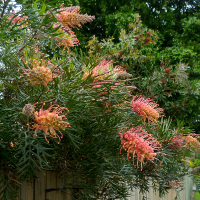
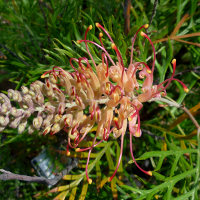
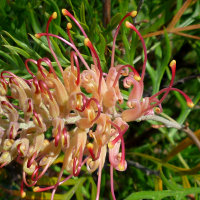
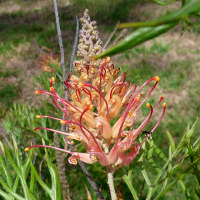
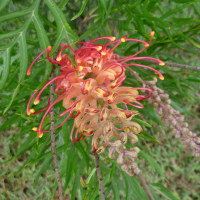
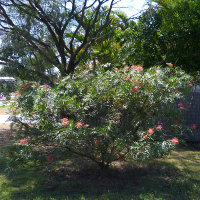
Grevillea baileyana
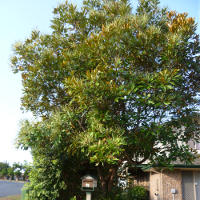
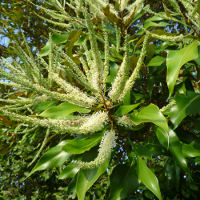
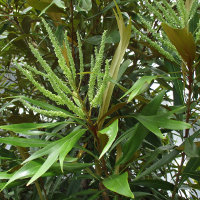
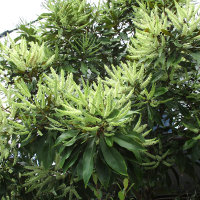
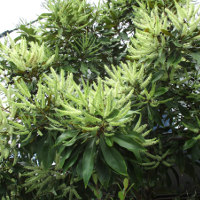
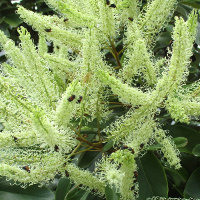
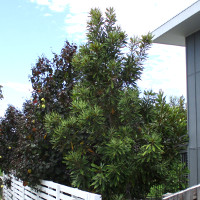
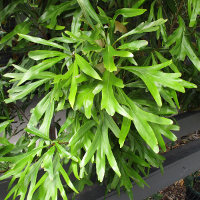
Grevillea robusta (Silky Oak)
Images to comeOlder News
Fifty Plants In Peril
Australia has many plants that are close to extinction. As part of a initiative led by scientists from Queensland University, the Threatened Species Recovery Hub has identified the nation's 50 species most at risk and developed an Action Plan for Australia's Imperilled Plants. The total amount and fragmentation of habitat are the biggest threats across the board, but there are other factors like weeds, feral animals, fire management and lack of pollinators at play. Smooth scrub turpentine (Rhodamnia maideniana) has been recorded in rainforest in SE Qld and NNSW but declined greatly since the introduction of myrtle rust (healthy and infected plants pictured above). The disease doesn't simply reduce vigour, it can infect flowering shoots and fruits directly which affects the ability of plants to set any seed at all. Coochin Hills grevillea (Grevillea hodgei) has been reduced to a few small groups near Beerwah in the Sunshine Coast hinterland. The integrity of this species is threatened by hybridisation with rogue Grevillea banksii that has escaped from garden cultivation. The illustrated action plan has information about the range, ecology and the known threats each of the 50 species faces. You can download it here: nespthreatenedspecies.edu.au/media/wksjzmcs/2-4-action-plan-for-australia-s-imperilled-plants-2021.pdf (May 2021)
Possible misspellings: Grevellias, Grevellia, Grevilia, Grevilias, Greveelias, Greveelia, Grevelia, Grevelias

